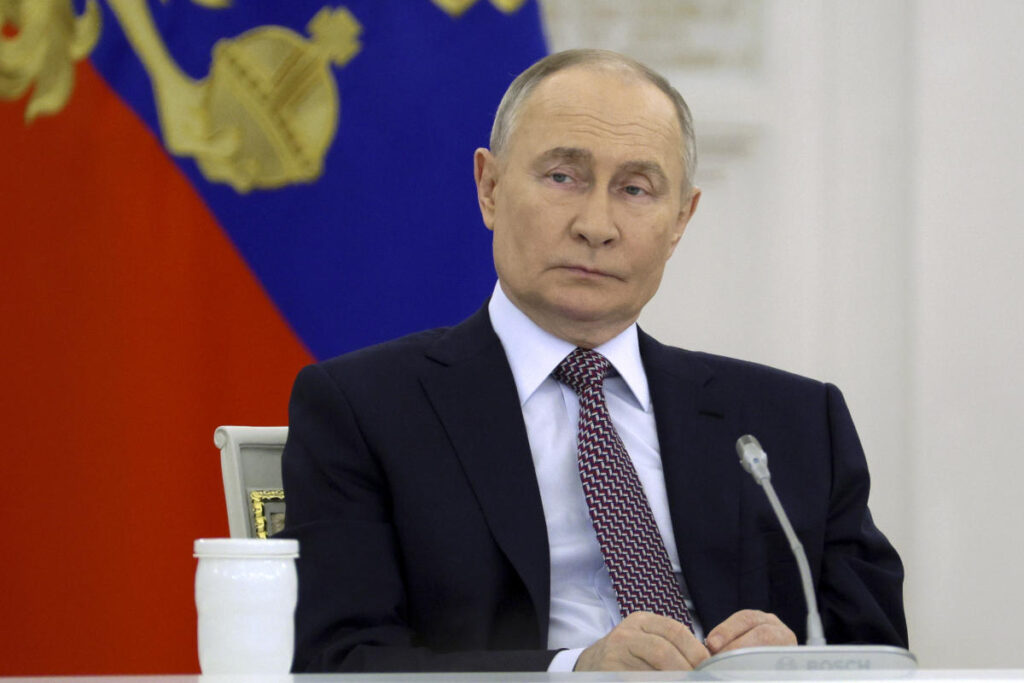On Sunday, the ongoing conflict between Ukraine and Russia saw a significant escalation as Ukrainian drones targeted a major fuel depot in the Russian region of Oryol, marking the second such strike within a week. This attack is part of Ukraine’s broader strategy to disrupt the fuel and energy supplies vital to the Russian military, particularly as winter intensifies. Russian officials reported the downing of 20 drones aimed at energy infrastructure, yet images circulated that depicted a fierce blaze at the Stalnoy Kon oil terminal. Ukrainian Deputy Security Secretary Andriy Kovalenko asserted that this depot plays a crucial role in supplying Russian forces engaged in Ukraine’s southern and northeastern regions, emphasizing the significance of these targeted strikes amidst an ongoing war that has now reached its third year.
The drone strikes occurred against a backdrop of intensified Russian assaults on Ukraine’s energy infrastructure, further threatening the already strained power supply as colder temperatures settle in. Russian President Vladimir Putin, responding to previous drone attacks that struck deep within Russian territory, vowed retaliation and emphasized that any attacks on Russia would prompt severe counterattacks. This pattern of escalatory exchange highlights the increasingly precarious situation as each side attempts to assert its capabilities and resolve amid a brutal and protracted conflict. Reports of drone strikes impacting civilian locations, such as Kazan, illustrate the war’s far-reaching consequences beyond the immediate frontline.
Casualties from the ongoing hostilities have been mounting on both sides. Recent reports from Ukraine’s Kherson region confirmed several civilian fatalities due to Russian drone strikes, emphasizing the tragic toll on innocent lives. Local authorities recounted harrowing incidents, including a young man’s death and others severely injured, underscoring the indiscriminate nature of such aerial assaults. Furthermore, in the Kharkiv region, a separate drone strike left another civilian critically injured, indicating a consistent barrage of attacks that threaten both military personnel and the civilian population alike.
In response to the heightened violence, Ukraine’s Air Force reported that it had successfully intercepted a considerable number of Russian drones during coordinated overnight operations, highlighting the ongoing aerial confrontation between the two nations. Despite Ukraine’s countermeasures, the conflict continues to escalate, with Russia’s Defense Ministry claiming they downed numerous Ukrainian drones as well. This ongoing aerial battle reflects a determined effort from both sides to gain an advantage through technological warfare, as drone capabilities increasingly dominate tactics on the battlefield.
Moreover, the ground situation remains volatile. Russian forces reported capturing key settlements in the northeastern regions of Kharkiv and Luhansk, showcasing ongoing territorial ambitions in a region that has seen significant military activity. Though there has been no confirmation from Ukrainian authorities, these reported gains underline the dynamic and often unpredictable nature of the conflict. Each side’s military operations appear aimed at shifting the balance of power as both contend with the challenges presented by the winter months.
As the conflict persists, the human cost of war continues to mount, with casualties, strikes on civilian infrastructure, and widespread devastation affecting countless lives in both Ukraine and Russia. The cycle of retaliation and the fierce competition for territorial control suggest that the situation will remain tense and precarious. With winter approaching, both nations face the substantial challenge of sustaining their military campaigns while also grappling with the broader implications of their actions on their respective populations. The ongoing conflict raises pressing questions about endurance, strategy, and the potential for future negotiations amid escalating hostilities.

